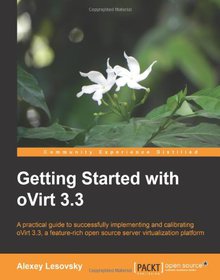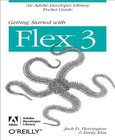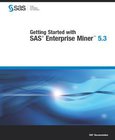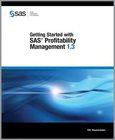Getting Started with oVirt 3.3

Book Details:
| Publisher: | Packt Publishing |
| Series: | Packt , Getting Started |
| Author: | Alexey Lesovsky |
| Edition: | 1 |
| ISBN-10: | 1783280077 |
| ISBN-13: | 9781783280070 |
| Pages: | 140 |
| Published: | Nov 22 2013 |
| Posted: | Nov 19 2014 |
| Language: | English |
| Book format: | |
| Book size: | 2.74 MB |
Book Description:
A practical guide to successfully implementing and calibrating oVirt 3.3, a feature-rich, open source server virtualization platform Overview Understand and master the internal arrangement of oVirt Quickly install and configure the oVirt virtualization environment Create your own infrastructure using the data centers, clusters, and networks within oVirt Learn how to quickly and easily take advantage of the advanced features of oVirt This book is full of illustrations, explanations, and step-by-step instructions to help you learn quickly and efficiently In Detail Virtualization technologies are evolving very rapidly. With advanced capabilities for hosts and guests including high availability, live migration, storage management, system scheduler, and many more, oVirt comes with the latest advancements in the field of open source virtualization. oVirt is built on the powerful Kernel-based Virtual Machine (KVM) hypervisor and on the RHEV-M management server, and it allows you to utilize the most advanced capabilities of virtualization in an easy and efficient way. Getting Started with oVirt 3.3 talks you through the internal structure and working of oVirt 3.3 using a practical, hands-on approach. You will learn how to install and set up your own virtualization infrastructure as well as in what order you should configure your virtualization environment, what features oVirt has, and how to use them. You will also learn how easy it is to create cluster policies to control the operation of a cluster as well as how to create and use a virtual machine template. With this book, you will learn how to run your own data centers in different configurations and about the existing opportunities for creating virtual machines. You will perform the re-balancing of clusters and quickly create dozens of virtual machines. This book will also help you create a network environment and set policies for QoS. You will also learn how to manage users and allocate resources between them. Getting Started with oVirt 3.3 teaches you everything you need to know about oVirt 3.3 and shows you how to get the most out of the technology quickly and effectively. What you will learn from this book Install and run data centers, clusters, and nodes Configure the logical network, VNIC profiles, and QoS Configure, start, and clone virtual machines as well as highly available virtual machines and live migration Create virtual machine templates and use them Connect the IPA directory services for user management Learn about user management and resource quotas Make your own cluster policies to control the operation of a cluster Understand pools with pre-started virtual machines and learn about the approaches to troubleshooting Approach Getting Started with oVirt 3.3 has a tutorial-based approach to learning oVirt KVM virtualization. This book will introduce you to the various components of the oVirt engine and will show you how to implement virtualization. Who this book is written for This book is designed for technicians and system administrators who are interested in virtualization technology in Linux / UNIX. It is assumed that you have an understanding of virtualization in general as well as what issues it solves. You will also need a basic knowledge of how to work on the command line in Linux.
Download Link:
Related Books:
Getting Started with Flex 3
An Adobe Developer Library Pocket Guide for Developers
Discover how easy RIA development can be with this one-of-a-kind handbook from the Adobe Developer Library. Several clear, step-by-step mini-tutorials teach you about web services, event handling, designing user interfaces with reusable components, and more. After finishing this guide, you'll be able to build Flash applications ranging from widgets to full-featured RIAs using the Flex SDK and Flex Builder 3.0. With Getting Started with Flex 3, you will:Walk through sample RIA projects and see examples of amazing applications people have built with Flex Work with ActionScript 3.0 and the MXML markup language Build user interfaces using the controls and tools available with the framework Get a tour of controls available commercially and through open so...
Getting Started with SAS Enterprise Miner 5.3
SAS Enterprise Miner 5.3 is the SAS data mining solution that addresses the entire data mining process using an intuitive Java point-and-click interface. This guide introduces you to the core functionality of SAS Enterprise Miner and shows you how to perform basic data mining tasks. You will learn how to use the graphical user interface (GUI) tools to create and manage process flow diagrams and projects and to export mining results for reporting and integration with other SAS software. The data mining tasks you will learn include sampling, exploring, modifying, modeling, and assessing data in order to create and refine predictive models. Getting Started with Enterprise Miner 5.3 provides step-by-step examples that create a complete process flow diagr...
Getting Started with SAS Profitability Management 1.3
This document contains step-by-step instructions for defining a SAS Profitability Management model using the sample data sets provided with the product. The instructions include those for defining and viewing reports based on the model, and for generating and viewing the resulting OLAP cube. The document provides a detailed description of, as well as conceptual information concerning, model elements....
2007 - 2021 © eBooks-IT.org



